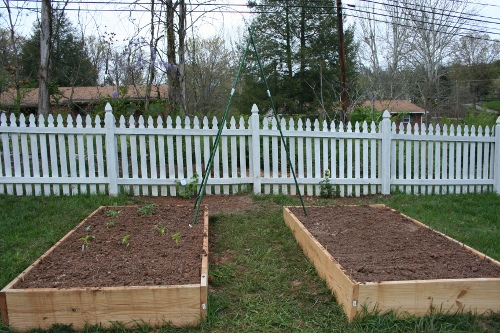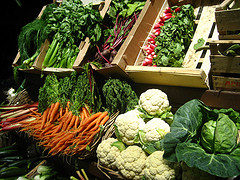 One of my favorite things about this website is answering questions from you! This week I received this email from Jo:
One of my favorite things about this website is answering questions from you! This week I received this email from Jo:
Okay, Mario … here is a question for you. It is easy as pie to go out and find all the information in the world you could ever want about building a raised bed and growing veggies in them. I have resources coming out my ears on raised beds, but what if you don’t/can’t have raised beds? Not everyone has them (or wants them) and for what ever reason they cannot build any … at least, not this year.
So here are my questions:
a) Are there any advantages to not doing raised beds and how can those advantages be exploited?
b) What are the disadvantages and how can they be contained, controlled, or eliminated without installing raised beds?
c) How does one best approach plot planning such a space while still leaving enough room to move around when the plants get crazy huge in late summer?
Nobody ever talks about what to do if raised bed are NOT an option! Please address this for me.
Thanks. Jo
Jo, Thank you so much for your question! Here’s your answer:
Raised gardening beds are the trend du jour. They have many advantages, but no one really seems to go into depth on their disadvantages, not to mention on what the options are if you do not have the space or the money to put in a raised bed.
The main advantages of a raised gardening bed are drainage and soil warmth. The latter can easily be dealt with by not planting crops too early or too late in the season. Sure, this cuts down on your growing season, but this is the best way to work around the issue. As for the other, the reason as to why a raised bed drains faster is because the soil in it is artificially built up and is therefore looser. To solve this problem with a traditional in-ground garden, make sure to till the soil very well before planting. Otherwise, it will be very compact and will drain slower, not mention be tougher to plant crops in.
With that said, there are several disadvantages to switching your garden over to a raised-bed format:
– They are very, very inflexible. If you do not plan your raised bed garden well, then you might be out of luck. Once all of your crops have been planted in one of these types of gardens, you will have a hard time rearranging them without killing them and having to start from scratch. This is because a raised bed garden has a limited amount of space. With a traditional, in-ground garden, if you need more room, then you can dig up another space – that is, unless you have already maximized the space in your back yard.
– They are expensive to build. This is one of the main reasons why people do not put in a raised bed garden. You have to buy the wooden sides, the stakes to hold them in the ground, the nails to hold them together, the string to delineate your garden sections, and, last but certainly not least, the soil. Many people forget about that last part until the raised bed is built, and then they realize that they need soil to fill in the garden. A traditional in-ground garden is much cheaper, because you are utilizing what you already have.
One thing that raised beds do handle well is the footpath issue. You need enough space to be able to walk around your garden and access all of the beds in order to weed, care and harvest your plants without being forced to stomp on others. With a traditional garden, you have to be a bit more creative. While it is impossible to build a footpath-less garden, you can make your footpath do double-duty. Take a series of pots (your choice of sizes) and plant herbs and vegetables in them. Crops like carrots, lettuce, radishes and even peppers can be grown in a series of pots. Place the pots on your footpath, and simply lift them out of the way when necessary. This allows you an easy way to access your crops that are in the ground, while not wasting any space at the same time.
Well, there you go, Jo! I hope this answered your questions. I look forward to your comments and more questions. Please don’t forget to share this article with your friends.
Pic by Moncton Gardener.




Thanks so much, Mario! Great response. Thanks for your hard work. Do you have any extra resources or books on this topic that you might like to recommend? Some references to “further reading” would be great! Thanks again.
Thank you, Jo! I appreciate your questions!! There are some great book choices out there. Here are my two favorites: http://tinyurl.com/c7k348h – http://tinyurl.com/caxx98w My wife likes this one–she says it makes her laugh: http://tinyurl.com/cukzbok